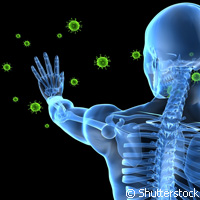New tool delivers novel diagnostic markers
New techniques developed by EU-funded scientists could help researchers quickly analyse medical databases to identify diagnostic markers and design tailor-made medication for allergy sufferers. Scientists led by the Sahlgrenska Academy of the University of Gothenburg in Sweden say these novel methods also could cut the numbers of animals used in clinical trials. Presented in the journal PLoS Computational Biology, the research is an outcome of two EU-funded projects: COMPLEXDIS ('Unravelling complex diseases with complexity theory: from networks to the bedside') and MULTIMOD ('Multi-layer network modules to identify markers for personalized medication in complex diseases'). COMPLEXDIS received EUR 1.81 million under the 'New and emerging science and technology' (NEST) Activity of the EU's Sixth Framework Programme (FP6), while MULTIMOD is backed under the Health Theme of the Seventh Framework Programme (FP7) to the tune of EUR 2.53 million. The team said their work further develops data analyses of medical databases registered n the PubMed database that represent studies of numerous patients, plus microarray data from another major database. Scientists use microarrays because they help them assess all 20,000 human genes for different disorders at the same time. Scientists from Italy, Norway and Sweden developed computational methods to determine how the body's immune system is controlled by a change in the interaction between different genes in lymphocytes (a kind of white blood cell). An examination of 18 million article abstracts included in PubMed gave the researchers the information they needed to identify these genes, which in turn helped them set up a network model of how these genes interact. 'The model can be compared to a printed circuit card in the lymphocyte which the cell uses to make decisions about whether to activate or suppress the immune system,' explains one of the authors of the study, Dr Mikael Benson from the Sahlgrenska Academy's Unit for Clinical Systems Biology and the Queen Silvia Children's Hospital. 'These decisions are made constantly as the lymphocytes are constantly exposed to different particles, just through breathing for example. Some of the particles could be dangerous and need to trigger a decision to mobilise the immune system. However, sometimes wrong decisions are made, which can lead to various disorders such as allergy or diabetes.' The team performed data simulations to determine how the network model reacted to repeated exposure to particles. The scientists said four reaction patterns emerged, namely one to suppress the immune system, and three to trigger it in different ways. 'We found that the genes in the model reacted in lymphocytes from patients with various immunological disorders,' Dr Benson says. 'We'll be using the model to identify diagnostic markers so that we can personalise medication that we're testing in clinical studies of allergy patients.' The Sahlgrenska researcher speculates that these methods will play a crucial role in future research, particularly because information in medical databases continues to grow. 'These methods could reduce the need for animal trials and lead to major savings in both time and money,' Dr Benson concludes. 'They could also mean quicker and better-designed experiments and their results could generate new knowledge about diagnostic markers or new medicines.'For more information, please visit: University of Gothenburg: http://www.gu.se/english PLoS Computational Biology: http://www.ploscompbiol.org/home.action MULTIMOD project: http://www.multimod-project.eu/index.html COMPLEXDIS project: http://www.complexdis.org.gu.se/
Countries
Italy, Norway, Sweden



